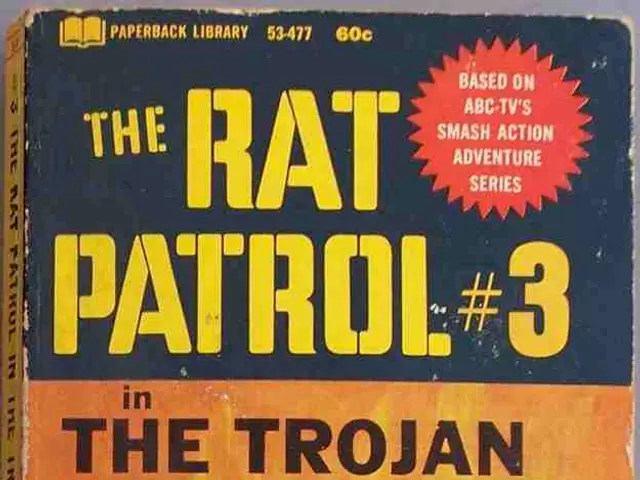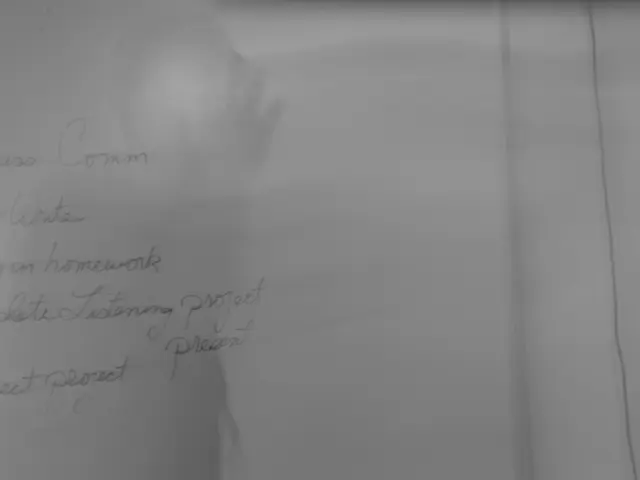SpaceX's Planned Demolition of the International Space Station
SpaceX, the American aerospace manufacturer and space transportation company, has been chosen by NASA to develop a specialised deorbiting vehicle for the International Space Station (ISS). This vehicle, known as the U.S. Deorbit Vehicle (USDV), is a variant of the Cargo Dragon spacecraft, designed to safely conclude the ISS's operational life by deorbiting it in a controlled manner.
The USDV will be equipped with a longer trunk carrying 46 Draco thrusters and approximately 30,000 kg of propellant, enabling it to perform the large deorbit burn required to bring the ISS down safely into a remote area of the southern Pacific Ocean, known as the spacecraft cemetery.
The timeline for this process is as follows:
- In 2028, the deorbiting phase for the ISS is planned to begin, marking the start of winding down station operations.
- By 2029, SpaceX will launch and dock the USDV to the ISS, where it will remain attached but dormant as the station’s orbit naturally decays from around 400 km altitude down to approximately 220 km.
- In 2030, after about a year attached and dormant on the ISS, the deorbit vehicle will perform a sequence of controlled burns to lower the station’s perigee further to roughly 150 km. This includes one or more orientation burns followed by the final deorbit burn that directs the ISS toward its destructive re-entry over the designated area in the Pacific Ocean.
This process is coordinated closely with international partners NASA, Roscosmos, ESA, JAXA, and the Canadian Space Agency, reflecting the ISS’s multinational nature. Russia will continue to support attitude control and station reboost operations with propellant reserves aboard the Zvezda module and Progress cargo ships during the preparatory phase to ensure the ISS remains stable and safely controlled during deorbit preparations and execution.
Key features of the deorbit vehicle include:
- A propellant load of around 30,000 kg, six times the normal Cargo Dragon's propellant.
- 46 Draco thrusters, compared to the standard Cargo Dragon's 16.
- Attachment to the ISS using a Cargo Dragon variant with an extended trunk.
- Mission phases consisting of a dormant attachment period, orbit decay, orientation burns, and a final deorbit burn.
NASA awarded SpaceX a contract worth up to $843 million in mid-2024 to build this vehicle, signifying significant governmental investment and priority to ensure a safe and controlled ISS deorbit.
The final orbit for the ISS will be determined, with the trajectory usually chosen to re-enter over the Pacific Ocean to minimise risks. The selection of SpaceX was made after an initial request for a partner to develop a spacecraft capable of safely moving the U.S. sections of the ISS out of orbit was launched in March 2023.
Advanced control systems such as autonomous navigation systems and sensors will be integrated to monitor the vehicle's position and orientation relative to the ISS in real time. This decision signifies the end of an era of international cooperation in space exploration as the ISS reaches the end of its operational life.
Several companies are involved in projects to develop private space structures, including Axiom Space, Blue Origin, Sierra Space, Boeing, Amazon, Voyager Space, Lockheed Martin, and Northrop Grumman. The contract aims to ensure a controlled deorbit of the ISS after 2030.
The vehicle will be equipped with robust security systems to prevent collisions and minimise potential space debris. It will likely be equipped with advanced propulsion systems using liquid propellant engines for precision in orbital adjustments.
After the deorbit, SpaceX and NASA will conduct a thorough assessment to verify that all sections of the ISS have been successfully deorbited and that debris has been safely removed. Close coordination with ISS partners, including Roscosmos (the Russian space agency), and other international partners will be essential for the safe and coordinated deorbit of the ISS.
- The specialized deorbiting vehicle developed by SpaceX, the U.S. Deorbit Vehicle (USDV), is a significant investment in technological advancement, reflecting a new chapter in environmental-science and space-and-astronomy.
- The partnership between SpaceX and international space agencies like NASA, Roscosmos, ESA, JAXA, and the Canadian Space Agency, demonstrates the integration of science, finance, and technology in ensuring a controlled deorbit of the International Space Station (ISS).
- To minimize risks and prevent potential collisions during the deorbit process, the USDV will be equipped with advanced technology such as robust security systems and liquid propellant engines for precise orbital adjustments.




